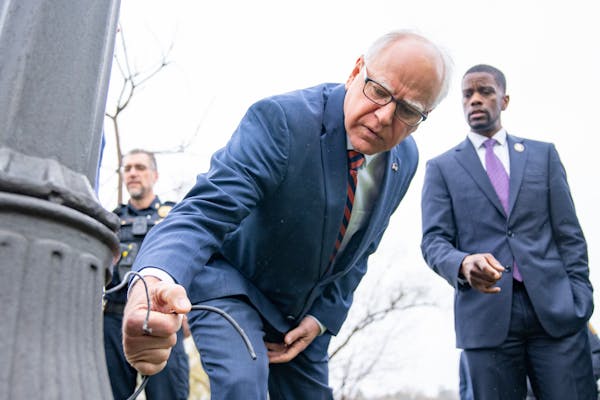Opinion editor's note: Strib Voices publishes a mix of guest commentaries online and in print each day. To contribute, click here.
•••
The Metropolitan Council, Hennepin County and their allies are seeking to block a Minnesota House bill (HF 14) that would impose a moratorium on advancing fixed-guideway projects like the 13-mile Blue Line Extension (BLE) light-rail line, proposed now to run over northwest metro arterial street medians ("Bill seeks to halt Blue Line LRT extension until troubled Southwest light-rail line opens," Feb. 13).
The moratorium, however, is timely and justified, not only due to the usual concerns over Met Council project-management capabilities, but also to its own disturbingly lower ridership projections. The 27,000 weekday riders projected in 2015 over a faster street-separated corridor and using pre-pandemic rider trip-choice assumptions is now just 12,500, a workload better handled by arterial bus rapid transit.
Reasons for this remarkable decline include stagnating population and job growth, longer and less frequent post-COVID commutes, deteriorating station-area public safety, and slower, bus-like trip times. That should have stopped the $3 billion BLE in its tracks, as it did in Ramsey County, where the equally slow and street-running Riverview modern streetcar proposal was shelved indefinitely.
But not in Hennepin County, where project promoters simply changed the narrative from touting the truly transformative performance metrics and ridership gains of the original street-separated BLE to one of entitlement, equity and flattery. Small wonder concerned lawmakers are now calling "time out."
That the North Side of Minneapolis and its nearby suburbs have experienced disparities and inadequate infrastructure investment is not in dispute here. But what started in 2015 as a 30-mph Blue Line light-rail extension offering the northwest metro both mobility and economic development parity with the southwest metro will now be a disruptive, crash-prone and poorly patronized 16-mph train doing the job of a 17-mph bus.
That, in turn, will drive the sort of spotty and inequitable station-area economic development seen today along the street-running University Avenue Green Line through St. Paul and southeast Minneapolis. And that, in turn, will set the northwest metro even further behind.
Green Line development is for real, but only around three stations near the University of Minnesota, where 200 acres of converted industrial real estate now support more than 30 multifamily residential and supporting retail projects. Students, professionals and market-rate renters using these stations can walk to the U, ride just 10 minutes to nearby downtown Minneapolis and 40 minutes via a Blue Line transfer to Minneapolis-St. Paul International Airport (MSP). For them, the Green Line works.
But for the eight station areas serving St. Paul's transit-dependent Midway, Rondo and Frogtown locales, it doesn't. Service is too slow, downtown Minneapolis bus/rail connections too far and land generally too scarce for development and ridership to flourish despite a citywide housing shortage, a rejuvenated regional economy and a subsidized trackside soccer stadium. Instead, University Avenue street traffic through the area, a key indicator of economic vitality, is off a staggering 50% since 2015 amid scaled-back site plans, empty storefronts and public safety challenges.
The Blue Line Extension risks more of the same. While North Loop patrons enjoy single-seat rides to MSP, everyone else will endure slow, meandering trips at Green Line speeds that include a 42-minute slog from Target Field to Brooklyn Park. This, combined with civic resistance to repurposing historic North Side and Robbinsdale station areas will, like the Green Line, limit purely transit-driven development to residential and commercial ventures on close-in North Loop industrial acreage that, ironically, was to be bypassed by the original BLE.
The southwest metro will have it better. For $2.5 billion, it will have fast, safe light-rail transit service that improves regional mobility for every rider, where even Hopkins is just 15 minutes from Target Field and where abundant end-to-end trackside industrial acreage is at hand for residential and commercial conversion. All while the northwest metro, for $3 billion, settles for bragging rights and photo ops for promoters, make-work for contractors and consultants, easy airport trips for North Loop riders, crashes and the illusion of mobility for everyone else.
There are effective ways to invest local tax proceeds to even up northwest metro social and infrastructure disparities and meet community mobility needs. The on-Broadway Blue Line Extension is not one of them. The Met Council's own numbers are telling us as much. So are the sponsors of HF 14.
Jerome Johnson is a retired transportation economist and research contributor to Twin Cities area transportation advocacy groups. Kristel Porter is executive director of the West Broadway Business and Area Coalition.
